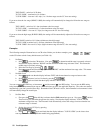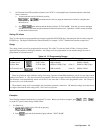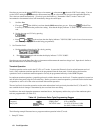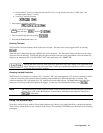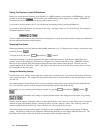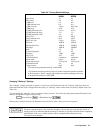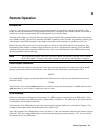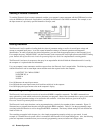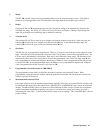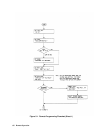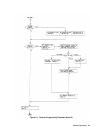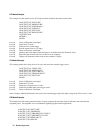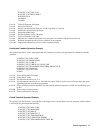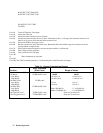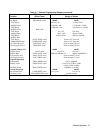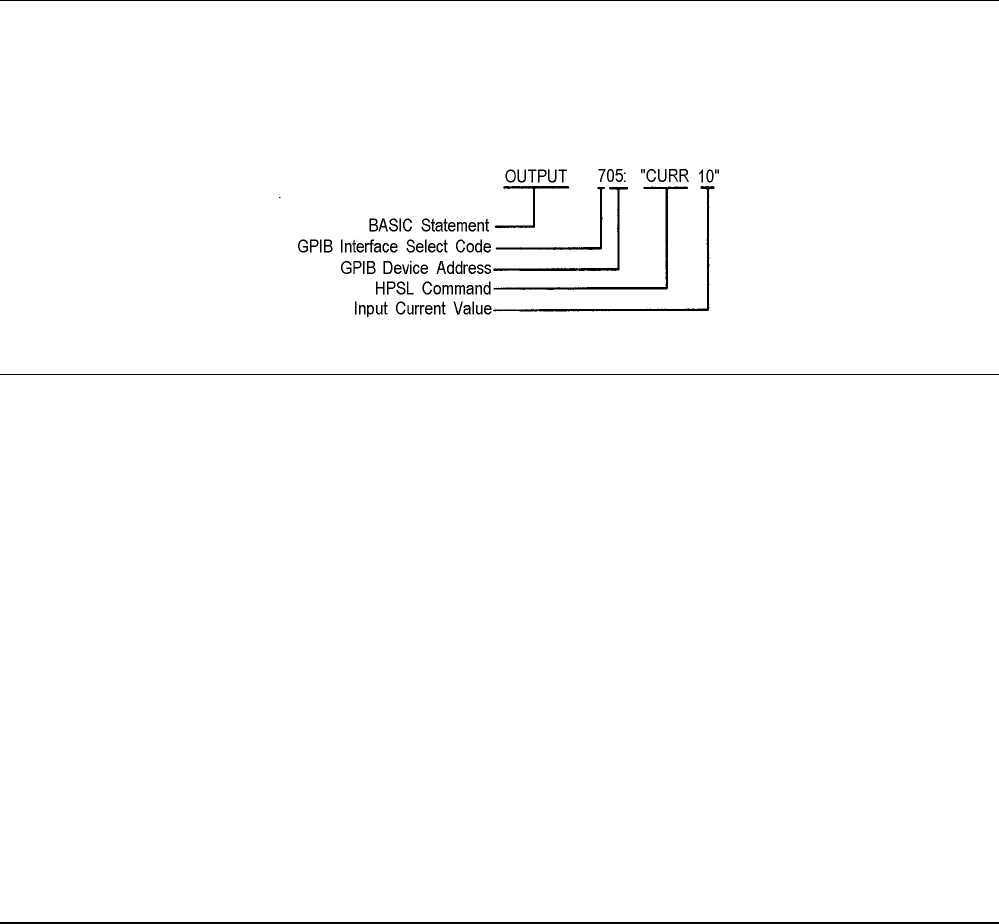
66 Remote Operation
Sending A Remote Command
To send the Electronic Load a remote command, combine your computer’s output statement with the GPIB interface select
code, the GPIB device (Electronic Load) address, and finally the Electronic Load’s HPSL command. For example, to set
the input current of a previously specified channel to 10 amps, send:
Getting Data Back
The Electronic Load is capable of reading back the values of parameter settings as well as its actual input voltage and
current or computed input power. It can also return information relating to its internal operation and instrument
identification. In order to read back the desired information, you must send the appropriate query to the Electronic Load.
For example, the query "MEAS:CURR?" asks the Electronic Load to measure the actual input current at the INPUT binding
posts. Refer to the Agilent Electronic Loads Programming Reference Guide for complete details on using queries.
The Electronic Load stores its response to the query in an output buffer which will hold the information until it is read by
the computer or is replaced with new information.
Use your computer's enter statement to read the response from the Electronic Load’s output buffer. The following example
asks the Electronic Load its actual input current and then reads the response back to the computer.
10 OUTPUT 705; "MEAS:CURR?"
20 ENTER 705; A
30 DISP A
40 END
Line 10: Measures the actual input current.
Line 20: Reads the actual input current level back into variable A in the computer.
Line 30: Displays the input current value on the computer's display
Remote Programming Commands
The Electronic Load command set consists of more than 60 HPSL compatible commands. The HPSL commands have
many optional key words which can be used to document your programs. Most of the commands have a query syntax which
allows the present parameter settings to be read back to the controller. All of these details are given in the Agilent
Electronic Loads Programming Reference Guide.
The Electronic Load's major functions can be programmed using a relatively few number of these commands. Figure 5-1
illustrates how to program these functions using the applicable HPSL commands. Table 5-1 lists the programming ranges
associated with each function as well as the applicable HPSL commands. The factory default settings for each function are
listed in Table 4-6.
The remaining paragraphs in this chapter give a few simple programming examples to help you get started. In each
example, it is assumed that a dc power source is connected to the Electronic Load’s input binding posts. Also, the following
points are important to remember when you are remotely programming current, resistance and voltage values.



